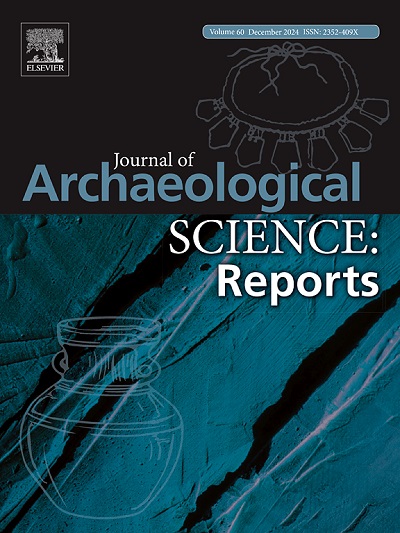Investigating domestic economy and mobility at a Woodland period ceremonial center in Northwest Florida, USA, using Neutron Activation Analysis
IF 1.5
2区 历史学
0 ARCHAEOLOGY
引用次数: 0
Abstract
The emergence of early villages along the Gulf Coast during the Woodland period (ca. 1000 B.C. – A.D. 900) was associated with significant changes in settlement, mobility, and subsistence, particularly a shift towards greater sedentism and more social and economic integration of households. Our assessment of household ceramic production, consumption, and exchange at a Woodland period ceremonial center on the Florida Gulf Coast using Neutron Activation Analysis (NAA) instead suggests that some households were more mobile and more economically autonomous than is often assumed. Domestic ceramics from the Letchworth (8JE337) ceremonial center and other Tallahassee Hills area sites were produced at the household level and circulated within local networks of mobility and exchange. However, some ceramics from domestic contexts at Letchworth were not circulated within the site or the broader region, suggesting that some households were somewhat economically insular. We suggest that relatively high mobility and economic autonomy of households in the Tallahassee Hills area may have been a strategy to mitigate risks associated with unpredictable local environments.
利用中子活化分析对美国佛罗里达州西北部一个林地时期仪式中心的国内经济和流动性进行了调查
林地时期(约公元前1000年至公元900年)墨西哥湾沿岸早期村庄的出现与定居、流动性和生存的重大变化有关,特别是向更大的定居主义和更多的家庭社会和经济一体化的转变。我们使用中子活化分析(NAA)对佛罗里达海湾沿岸一个林地时期仪式中心的家庭陶瓷生产、消费和交换进行了评估,结果表明,一些家庭比通常认为的更具流动性和经济自主性。来自莱奇沃斯(8JE337)仪式中心和塔拉哈西山地区其他遗址的家用陶瓷是在家庭层面生产的,并在当地的流动和交换网络中流通。然而,莱奇沃斯的一些家庭陶器并没有在该遗址或更广泛的地区流通,这表明一些家庭在经济上有些孤立。我们认为,塔拉哈西山区家庭相对较高的流动性和经济自主权可能是减轻与不可预测的当地环境相关的风险的一种策略。
本文章由计算机程序翻译,如有差异,请以英文原文为准。
求助全文
约1分钟内获得全文
求助全文
来源期刊

Journal of Archaeological Science-Reports
ARCHAEOLOGY-
CiteScore
3.10
自引率
12.50%
发文量
405
期刊介绍:
Journal of Archaeological Science: Reports is aimed at archaeologists and scientists engaged with the application of scientific techniques and methodologies to all areas of archaeology. The journal focuses on the results of the application of scientific methods to archaeological problems and debates. It will provide a forum for reviews and scientific debate of issues in scientific archaeology and their impact in the wider subject. Journal of Archaeological Science: Reports will publish papers of excellent archaeological science, with regional or wider interest. This will include case studies, reviews and short papers where an established scientific technique sheds light on archaeological questions and debates.
 求助内容:
求助内容: 应助结果提醒方式:
应助结果提醒方式:


